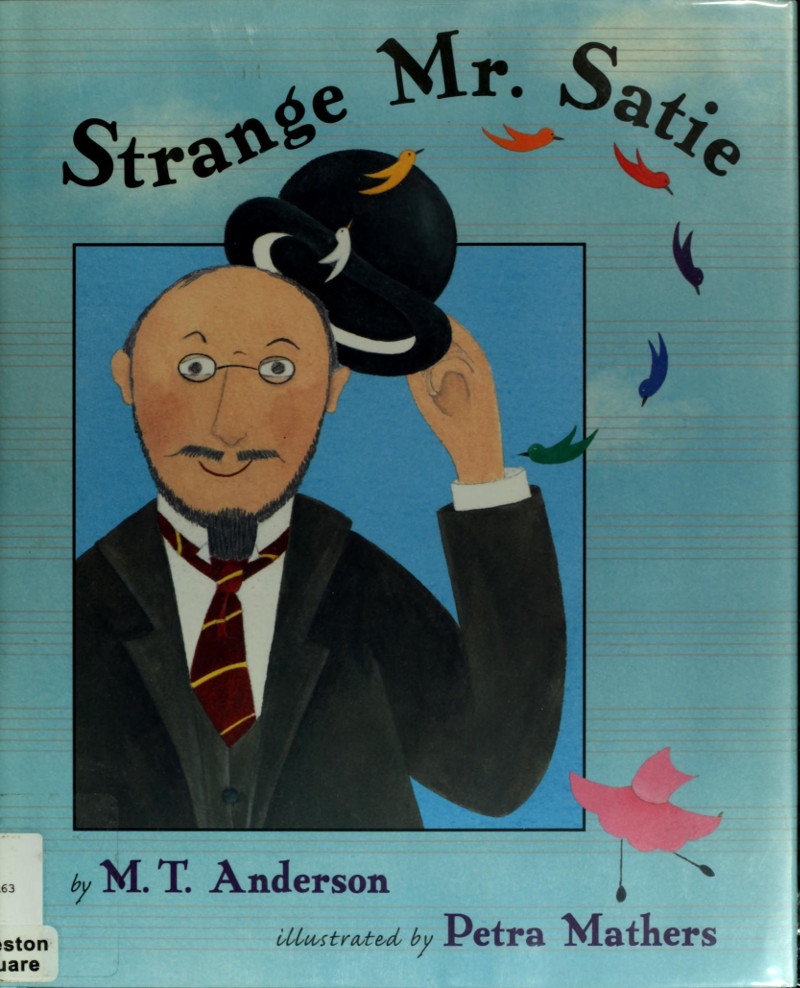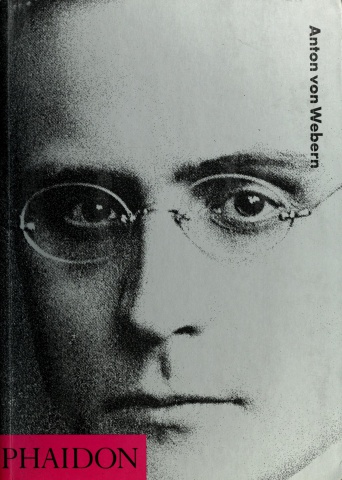M. T. Anderson: Strange Mr. Satie (2003)
Filed under children's book | Tags: · biography, music

Walking through the streets of Paris over a hundred years ago, Erik Satie could not have looked more normal in his black bowler hat and tie. But Mr. Satie was dreaming of music no one had heard before – music like ancient chants and modern circus tunes rolled into one. A friend of poets, puppeteers, magicians, great painters like Picasso, and the Surrealists, Satie was at the center of a world where sense was nonsense, and the imagination ruled supreme.
M. T. Anderson recounts the story of the irreverent French composer in a biography that is witty, accessible, and endlessly surprising, while Petra Mathers’s illustrations capture all the vibrancy that was Erik Satie’s topsy-turvy world.
Illustrated by Petra Mathers
Publisher Viking, New York, 2003
38 pages
Review (Alice Cary, BookPage, 2003)
PDF (13 MB)
Comment (0)Malcolm Hayes: Anton von Webern (1995)
Filed under book | Tags: · biography, composing, music, nazism

In this biography of one of the twentieth century’s greatest composers, Malcolm Hayes sets Webern’s radical technical advances against the Romantic inheritance of nineteenth-century Austro-Germany, tracing the development of a man and his music.
Born into the Imperial, musical heritage of Vienna, Webern became captivated by Renaissance vocal music, and this student passion was to haunt his compositions all his life. A pupil of Schoenberg, he also came to use the twelve-note method, and combined this with his love of chamber music to create a sound that is entirely his own. Despite a prolific rate of composition in his early years, Webern’s music output is small and tends to extreme brevity. Tragically, he was accidentally shot and killed in the Allied occupation of Austria. His work has continued to influence musicians throughout the twentieth century and since.
Publisher Phaidon Press, London, 1995
20th-Century Composers series
ISBN 0714831573, 9780714831572
240 pages
PDF (77 MB, no OCR)
Comment (0)Michel Meulders: Helmholtz: From Enlightenment to Neuroscience (2001/2010)
Filed under book | Tags: · 1800s, biography, empiricism, enlightenment, history of science, music, neurophysiology, neuroscience, physiology, psychology, science, vision

“Although Hermann von Helmholtz was one of most remarkable figures of nineteenth-century science, he is little known outside his native Germany. Helmholtz (1821-1894) made significant contributions to the study of vision and perception and was also influential in the painting, music, and literature of the time; one of his major works analyzed tone in music. This book, the first in English to describe Helmholtz’s life and work in detail, describes his scientific studies, analyzes them in the context of the science and philosophy of the period—in particular the German Naturphilosophie—and gauges his influence on today’s neuroscience.
Helmholtz, trained by Johannes Müller, one of the best physiologists of his time, used a resolutely materialistic and empirical scientific method in his research. This puts him in the tradition of Kant and the English empirical philosophers and directly opposed to the idealists and naturalists who interpreted nature based on metaphysical presuppositions. Helmholtz’s research on color vision put him at odds with Goethe’s more romantic theorizing on the subject; but at the end of his life, Helmholtz honored Goethe’s contributions, acknowledging that artistic intuition could reveal truths about the human mind that are inaccessible to science.
Helmholtz’s work, eclipsed at the beginning of the twentieth century by new ideas in neurophysiology, has recently been rediscovered. We can now recognize in Helmholtz’s methods–which were based on his belief in the interconnectedness of physiology and psychology–the origins of neuroscience.”
Originally published as Helmholtz: Des lumières aux neurosciences, Odile Jacob, Paris, 2001
Translated and edited by Laurence Garey
Publisher MIT Press, 2010
ISBN 0262014483, 9780262014489
235 pages
PDF, PDF (updated on 2018-8-5)
Comments (2)
